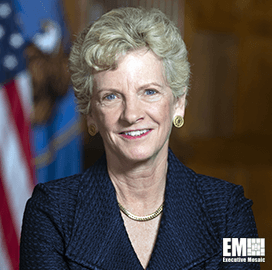General Services Administration Administrator Robin Carnahan has unveiled a new “one-stop shop” for federal agencies seeking to procure zero-emission vehicles and install electric vehicle charging stations in support of the Biden administration’s goal of electrifying the federal fleet.
During a visit to the University of Michigan’s Mcity Test Facility, Carnahan said GSA offers a range of specialized acquisition resources to streamline the procurement of necessary infrastructure, including charging stations, for federal facilities, the agency reported Wednesday.
The effort is in line with an executive order signed by President Biden that sets a goal of transitioning the federal fleet to 100 percent zero-emission vehicle purchases by 2035 and 100 percent zero-emission light-duty vehicle acquisitions by 2027.
“Electrifying the federal fleet will have enormous benefits, and we want to make it as easy as possible for federal agencies to make this transition,” Carnahan said.
In April, GSA awarded 16 companies, including nine small businesses, blanket purchase agreements for supplying electric vehicle supply equipment to federal agencies.
The agency expects to award later in the summer new governmentwide construction and design/build indefinite-delivery/indefinite-quantity contracts for the installation of charging station infrastructure at federal locations across the U.S.








